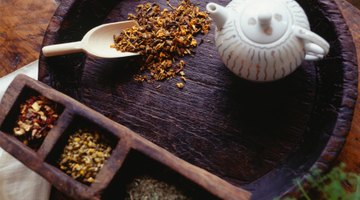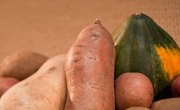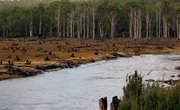Oregon produces few manufactured products such as cars, steel, mining, aerospace or electronics. It is primarily an agricultural state. Rich soil and temperate climates throughout the state make it ideal for several kinds of crops. Oregon farmers grow -- and export around the world -- a variety of fruits, vegetables, nuts and grains.
Maraschino Cherries
Around the turn of the 20th century, most maraschino cherries were produced on the East Coast from Italian cherries. Oregon provided the perfect climate for cherry orchards, but they could not be shipped to the East fast enough, and East Coast producers rejected them. Ernest Wiegand, a horticulturist, discovered a way to treat Oregon cherries to make them acceptable to East Coast producers. Soon Oregon began producing maraschino cherries. Today, the two largest producers in the U.S. are in Oregon.
Lumber

The Pacific Northwest has always been known for its lumber production. The first shipment of Oregon lumber was exported to China in 1833. By the 1850s, Oregon had five lumber mills, and exports increased to include Hawaii and Australia. Prior to the early 20th century, Oregon trailed Washington and California in lumber production due to transportation difficulties. By 1938, Oregon became the leading lumber producer in the U.S. Lumber production in Oregon has declined due to major fires, restrictions on old forest cutting, environmental preservation issues and the decline of exports to Asia.
Hazelnuts

Oregon accounts for 99 percent of the hazelnuts grown in the U.S. Over half the yield is exported around the world. Oregon began growing hazelnuts, also known as filberts, in significant quantities around 1876. In 1905, George Dorris started the first commercial hazelnut orchard. Production between 1930 and 2004 continually increased, from 300 tons to more than 37,000 tons per year. Hazelnuts contain monounsaturated fat, vitamin E and folic acid, which promote heart health.
Peppermint

Oregon is the largest producer of peppermint in the U.S. -- growing about 35 percent of the nation’s peppermint. Peppermint oil is used in candy, toothpaste, gum, insect repellent and aroma therapies. Peppermint leaves are used in teas, chewing tobacco, composting and salad garnish. Oregon production began in the Willamette Valley, but production costs have driven crops to eastern Oregon.
Related Articles
References
Writer Bio
Greg Epperly retired in 2002 from the United States Army after 20 years in calibration electronics. He has been writing professionally since 1985. He has written various calibration and electronics training materials, and numerous operational and quality-control procedures. Epperly has a Bachelor of Science in management studies from the University of Maryland.











